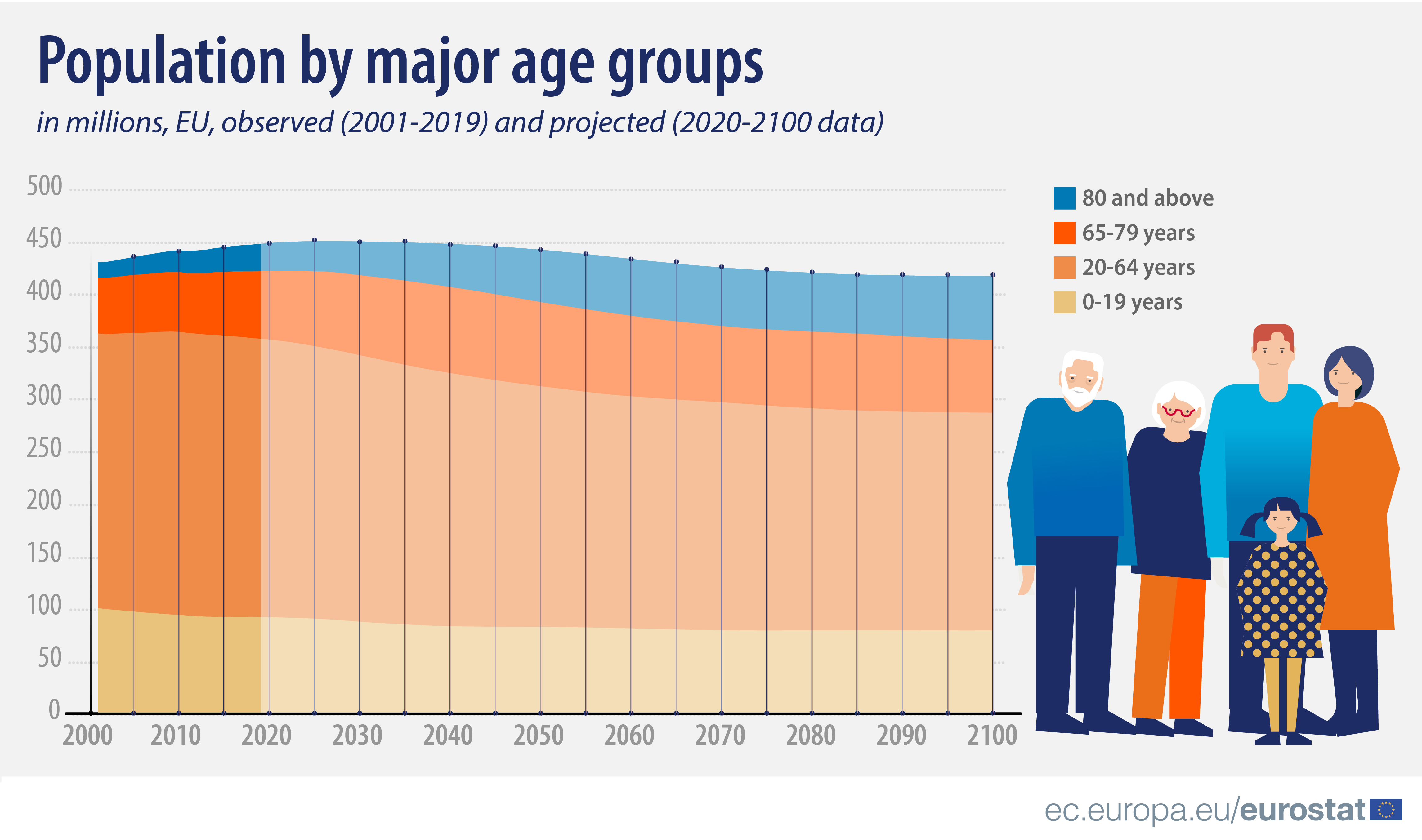Under the baseline scenario of the latest population projections issued by Eurostat, the European Union’s population will decrease by almost 7%, or 31 million people, between 1 January 2019 and 1 January 2100.
Following years of steady increase, the EU’s population is projected to peak at 449 million persons in 2026, and then to progressively fall.
An ageing society
Under this baseline scenario, the EU’s population will continue to grow older generally. The proportion of children (aged 0 to 14 years) is projected to decrease slightly from a share of 15% at the beginning of 2019 to 14% by 2100. Similarly, the share of working-age people in the EU’s total population is projected to decrease from close to 65% in 2019 to 55% in 2100.
In contrast, the share of those aged 65 years and above in EU’s total population is projected to increase by 11 percentage points, from 20% at the start of 2019 to 31% by 2100. In the same period, the share of those aged 80 years and above is foreseen to more than double, from 6% to 15%.
As a result, the median age is projected to increase from the current 43.7 years in 2019 to 48.8 in 2100.
Source dataset: demo_pjan and proj_19np
Visualise population trends in your country
On the occasion of World Population Day 2020, check out our interactive population pyramid that allows you to compare the EU’s current population by age group and sex with Eurostat's population projections.
Source dataset: proj_19np
Select an EU Member State or an EFTA country to see the number of people by age group and sex in 2019 (block colour) and compare this with future population projections up to the year 2100 (line with a border).
Note: The European Union (EU) includes 27 EU Member States. The United Kingdom left the European Union on 31 January 2020. Further information is published here.
Methodological note: Eurostat’s population projections result from a set of assumptions on future developments for fertility, mortality and net migration. In other words, population projections are ‘what-if’ scenarios that track population developments under a set of assumptions. For this reason, population projections should not be considered as forecasts.
Given the intrinsic uncertainty of future population dynamics, such results should be interpreted as only one of a range of possible demographic developments.
This article presents a concise summary of the latest population projections results, for the ‘baseline scenario’, calculated on the set of assumptions for fertility, mortality and migration for the time horizon 2019 to 2100.
For further information:
- Eurostat news release on the EU population
- Eurostat database of population projections
- Summary methodology
To contact us, please visit our User Support page.
For press queries, please contact our Media Support.

